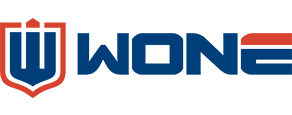Reputation and economic losses caused by food safety incidents to companies
In the high-stakes world of food production, trust is the most valuable ingredient. Yet, this trust can evaporate overnight. Recent alerts from
the EU's Rapid Alert System for Food and Feed (RASFF) serve as a stark reminder: in late 2025, Italy flagged non-compliant exported
sausages, and the Netherlands reported issues with French Le Bronchon cheese, leading to measures like destruction and a prohibition of
trade.
For the companies involved, this is more than a regulatory hiccup—it's the starting pistol for a crisis that inflicts severe reputation and
economic losses. The immediate financial hit is just the beginning; the long-term brand damage can be far more destructive.
The Immediate Economic Impact: A Direct Hit to the Bottom Line
When a food safety alert is issued, the financial toll is immediate and multifaceted. Companies face a cascade of direct costs that can strain
even the healthiest balance sheets.
Product Recall and Destruction Costs: As seen with the French cheese incident, measures like "destroying" the product are common. This
means the company bears the cost of the lost inventory, logistics for retrieving the goods, and the destruction process itself. This is a total
write-off.
Regulatory Fines and Legal Fees: Non-compliance with food safety standards, whether in the EU, US, or elsewhere, often results in
significant financial penalties from government bodies. Additionally, legal fees can skyrocket as the company navigates the complex
regulatory fallout.
Operational Shutdown and Investigation: Production may be halted voluntarily or by mandate. This idle time means lost revenue while the
company still pays for fixed costs like salaries, rent, and utilities. A thorough root-cause investigation also requires resources, both internal
and external.
The Silent Killer: Long-Term Reputation Damage
While the economic losses are quantifiable, the erosion of brand reputation is a silent, slow-burning crisis. It's the loss of the intangible asset
that took years to build.
Erosion of Consumer Trust: A single incident can shatter the perception of quality and safety that consumers have in a brand. Will customers
confidently reach for that brand of sausage or cheese again? For many, the answer is no, leading to long-term declines in sales.
Retailer and Partner Reluctance: Following a RASFF notification, distributors and retailers, like those "notified" in the Dutch case, may
become wary. They might de-list the product or impose stricter, more costly requirements for future orders, directly impacting distribution and
sales channels.
Competitive Disadvantage: In a crowded marketplace, a food safety misstep gives competitors a powerful advantage. They can capitalize
on your weakness, attracting your former customers and even poaching key accounts.
Negative Media and Digital Footprint: In today's digital age, news of a recall spreads instantly. Negative press articles and social media
commentary create a permanent digital footprint that can haunt the company for years, affecting recruitment, investment, and public
perception.
The Vicious Cycle: How Reputation Loss Drives Further Economic Loss
The separation between reputation and economic loss is artificial; they are deeply intertwined. A damaged reputation directly fuels ongoing
financial decline:
Decreased Market Share: As consumers and retailers turn away, sales volume drops, leading to a smaller market share that can be
incredibly difficult to regain.
Lower Pricing Power: A tarnished brand often loses the ability to command premium prices. To move remaining inventory or re-enter the
market, companies may be forced into deep discounts, squeezing profit margins.
Increased Marketing Costs: Rebuilding a damaged brand requires a significant investment in public relations and marketing campaigns to
win back consumer confidence—a cost that wouldn't have been necessary without the incident.
Protecting Your Brand: Proactive Prevention is the Only Cure
The best strategy for mitigating these devastating losses is to prevent the incident from ever happening.
Invest in Robust Food Safety Management Systems: Implement and rigorously maintain internationally recognized standards (like HACCP,
ISO 22000). This isn't a cost; it's an insurance policy.
Ensure Supply Chain Transparency: Know your suppliers inside and out. Regular audits and strict quality controls for raw materials are
crucial to prevent external failures from becoming your company's crisis.
Develop a Crisis Communication Plan: Have a clear, pre-established plan for how to communicate transparently and effectively with the
public, regulators, and partners if an incident occurs. A swift, honest response can help contain reputation damage.
An Investment in Safety is an Investment in Your Future
The recent RASFF notifications for Italian sausages and French Le Bronchon cheese are more than just regulatory bulletins—they are
cautionary tales. The path to recovery from a food safety incident is long and costly. The "economic losses" from fines and destroyed
products are painful, but the "reputation losses" from broken trust can be fatal.
For food companies, a relentless focus on safety is not just a regulatory requirement; it is the cornerstone of brand integrity and long-term
economic resilience. Protecting your customers is ultimately the most powerful way to protect your bottom line.


